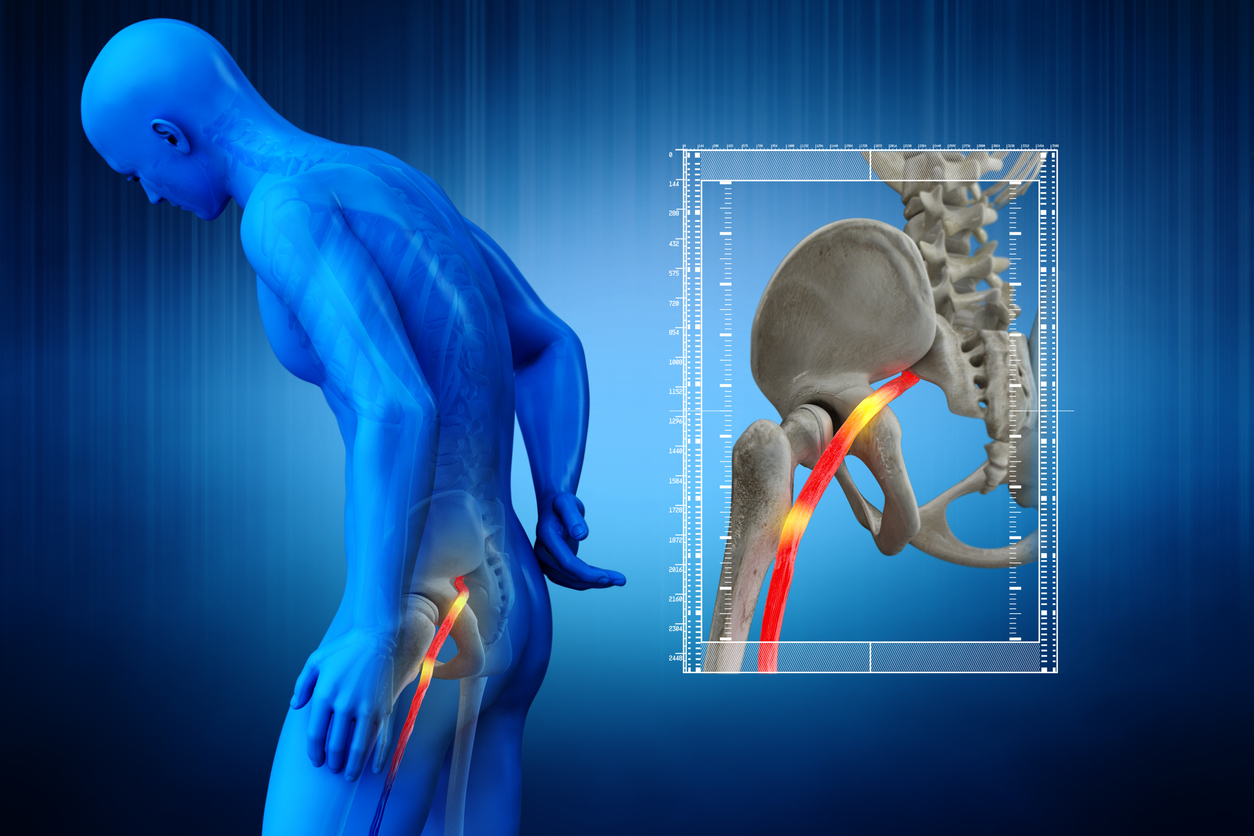Sciatic Conditions
- Home
- Sciatic Conditions

Understanding Sciatica
Sciatica is one of the most common—and most misunderstood—causes of lower back and leg pain. It occurs when the sciatic nerve, the largest nerve in the body, becomes irritated or compressed. This can lead to sharp, burning, or radiating pain that travels from the lower back into the glutes, hamstrings, and even all the way down to the foot. Many patients also experience numbness, tingling, muscle weakness, or difficulty standing for long periods. While sciatica can be triggered by herniated discs, spinal misalignments, muscle tension, or inflammation, the root cause almost always involves structural imbalance and nerve pressure.
Common causes of Sciatica
Lumbar Disc Herniation: Bulging or ruptured discs pressing on the sciatic nerve roots.
Spinal Misalignments (Subluxations): Shifts in the lumbar spine or pelvis that irritate or compress the nerve.
Piriformis Syndrome: Tight or spasming gluteal muscles—especially the piriformis—pinching the sciatic nerve.
Degenerative Disc Disease: Disc thinning that reduces space for nerves, causing irritation.
Arthritis & Bone Spurs: Inflammatory changes that narrow nerve pathways in the spine.
Spinal Stenosis: Narrowing of the spinal canal creating pressure on nerve tissue.
Postural Imbalances: Prolonged sitting, poor ergonomics, or uneven weight distribution stressing the lower back.
Repetitive Strain or Lifting Injuries: Overuse patterns that inflame or compress the sciatic nerve.
Pregnancy-Related Changes: Shifts in pelvic alignment and increased load on the lumbar spine.
Previous Trauma: Falls, sports injuries, or car accidents that disrupt normal spinal mechanics.

How can chiropractic help?
Chiropractic care helps relieve sciatica by correcting the underlying structural issues that irritate or compress the sciatic nerve. Through precise spinal adjustments, chiropractors restore proper alignment in the lumbar spine and pelvis, reducing pressure on the nerve roots and improving overall mobility. Combined with soft-tissue therapy, decompression, and targeted corrective exercises, chiropractic care reduces inflammation, relaxes tight muscles, and stabilizes the areas surrounding the sciatic nerve. Instead of masking symptoms with medication, chiropractic addresses the root cause—helping patients move better, heal faster, and prevent future flare-ups.

